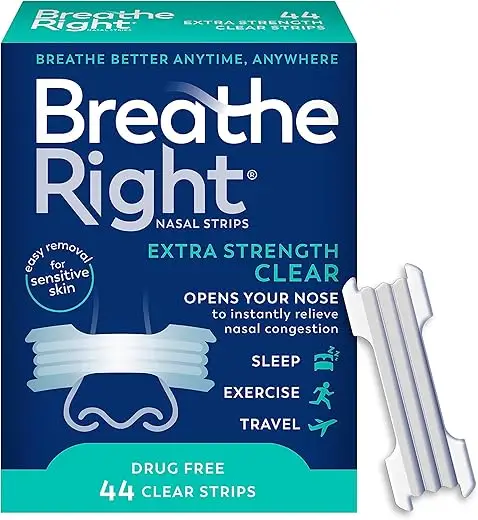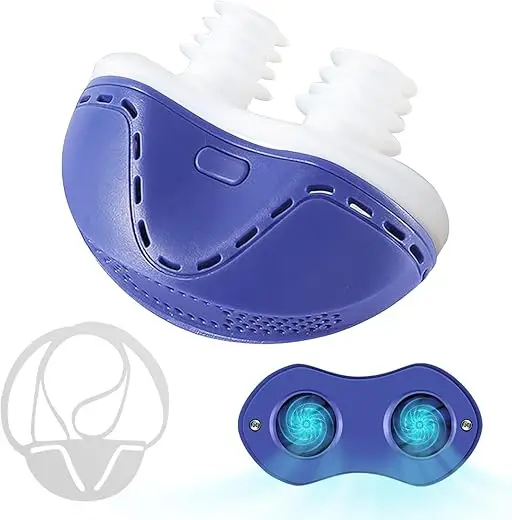Understanding Sleep Apnea and Its Impact
Did you know that nearly 30 million Americans suffer from sleep apnea, yet 80% remain undiagnosed? This chronic condition is more than just loud snoring; it can lead to serious health issues such as heart disease, diabetes, and daytime fatigue. For many, the effects of sleep apnea stretch far beyond the bedroom, disrupting daily life and impacting overall well-being.
Symptoms often include gasping for air during sleep, chronic snoring, and excessive daytime sleepiness. These disruptions can affect work performance, relationships, and even emotional health. If left untreated, sleep apnea can lead to significant long-term complications, making it crucial for sufferers to seek effective treatment.
Fortunately, there are innovative and lesser-known options available. In this article, we’ll explore five game-changing treatments that can transform your sleep quality. From customized oral appliances to cutting-edge technologies, discover how you can conquer sleep apnea and reclaim restful nights.




Oral Appliance Therapy: A Customized Solution
Oral appliance therapy is an increasingly popular treatment for sleep apnea that involves custom-fitted devices designed to reposition the jaw and tongue. This repositioning helps to keep the airway open during sleep, making it an effective alternative for those who may struggle with traditional CPAP (continuous positive airway pressure) machines.
How It Works
These oral appliances work by gently moving the lower jaw forward, which in turn opens up the airway and prevents obstruction. Often made from durable materials, these devices are tailored to fit each individual’s mouth, ensuring comfort and effectiveness. Many users report fewer disruptions during the night, leading to improved overall sleep quality.
Who It’s Best Suited For
Oral appliance therapy is especially beneficial for:
Effectiveness Compared to CPAP
Studies have shown that oral devices can be as effective as CPAP for certain patients, particularly for those with mild to moderate sleep apnea. Users often appreciate the ease of use and portability of oral appliances. In fact, a survey indicated that nearly 70% of users prefer oral appliances over CPAP due to their comfort and simple maintenance.
Incorporating an oral appliance might just be the breakthrough some sleep apnea sufferers need. You deserve restful nights, and with the right approach, you can significantly enhance your sleep quality. Up next, we’ll explore an equally intriguing option: positional therapy, and how adjusting your sleeping position could lead to better breathing.
Positional Therapy: Sleep Your Way to Better Breathing
Many sleep apnea sufferers may not realize that their sleeping position can significantly influence their condition. Research indicates that sleeping on your back can exacerbate apnea symptoms, often leading to increased airway obstruction. By adjusting the way you sleep, you might find a simpler solution to managing your sleep apnea.
The Power of Position
When individuals with sleep apnea lay on their backs, gravity can cause the tongue and soft tissues in the throat to collapse into the airway. This blockage interrupts normal breathing patterns. On the other hand, sleeping on one’s side can help keep the airway more open, reducing the frequency and severity of apnea events.
Techniques and Devices to Promote Positional Therapy
Here are several methods and tools that can assist with positional therapy:
The Benefits
The advantages of positional therapy include:
Adopting positional therapy can be a practical step towards better breathing during sleep. As we transition to the next treatment, we’ll delve into how lifestyle changes—often straightforward but impactful—can further enhance your sleep quality and overall health.
Lifestyle Changes: Small Adjustments, Big Impact
When it comes to managing sleep apnea, lifestyle changes can make a remarkable difference. Simple modifications in daily habits can lead to significant reductions in symptoms, improving both your sleep quality and overall health.
Weight Loss
Excess weight, especially around the neck, contributes to airway obstruction during sleep. Shedding even a modest amount—5 to 10% of your body weight—can alleviate symptoms in many patients. Incorporating small fitness goals, like a daily walk or cycling, can help kickstart a journey to better health.
Dietary Changes
Modifying your diet can also be beneficial. Focus on a balanced intake of fruits, vegetables, lean proteins, and whole grains. Foods rich in Omega-3 fatty acids, such as salmon and flaxseeds, have been shown to reduce inflammation. Additionally, avoid heavy meals before bedtime, as indigestion may aggravate apnea symptoms.
Regular Exercise
Implementing regular physical activity not only helps with weight management but enhances overall respiratory function. Aim for at least 150 minutes of moderate aerobic exercise each week. Activities such as swimming, cycling, or even dancing can significantly improve your sleep quality.
Avoiding Alcohol and Sedatives
Both alcohol and sedatives relax the throat muscles, which can exacerbate sleep apnea. Limiting their use, especially before bedtime, can keep your airway more stable during sleep. Instead, consider drinking herbal teas or trying relaxation techniques, like meditation or deep-breathing exercises, to unwind.
Integrating these lifestyle changes can lead to powerful improvements, serving as an essential foundation for sleep apnea management. As we look toward technological advancements, let’s explore some innovative options that are reshaping the landscape of sleep apnea treatments in the next section.
Innovative Technology: The Future of Sleep Apnea Treatment
As technology continues to advance, new tools emerge to help tackle sleep apnea more effectively. These innovations not only enhance patient comfort but also provide actionable insights that can significantly improve sleep quality.
Smart Monitoring Devices
Wearable technology, such as smartwatches and rings, has introduced the ability to monitor sleep patterns and breathing disturbances in real time. Devices like the Oura Ring or Fitbit can track your oxygen levels and provide data on your sleep cycles. This information empowers users to make informed choices about their sleep habits and can alert them to potential issues that may require medical attention.
Mobile Apps for Sleep Management
Several apps are designed to complement traditional treatments by offering personalized feedback and strategies. For instance, apps like Sleep Cycle analyze your sleep patterns and wake you during light sleep, making it easier to rise feeling refreshed. Others may offer sleep hygiene tips or guided breathing exercises aimed at reducing apnea symptoms.
Telehealth Platforms
Telemedicine is transforming how patients connect with healthcare providers for sleep apnea management. Video consultations allow users to consult with specialists from the comfort of their own homes, facilitating timely adjustments to treatment plans based on the latest data from their monitoring devices.
The Future Is Bright
Leveraging these innovative technologies can revolutionize your approach to managing sleep apnea. By combining real-time analysis with tailored treatment strategies, patients can achieve better outcomes than ever before. The journey doesn’t have to end here; if these high-tech solutions aren’t enough, surgical options might be the next step worth exploring.
Surgical Options: When All Else Fails
For some individuals, non-invasive treatments for sleep apnea may not be enough to provide adequate relief. In such cases, surgical interventions may be necessary. Several surgical procedures can help improve airflow during sleep by addressing anatomical blockages that contribute to the condition.
Types of Surgical Procedures
Uvulopalatopharyngoplasty (UPPP) is one of the most common surgical approaches. This procedure involves removing excess tissue from the throat, including the uvula and parts of the soft palate. By widening the airway, UPPP can significantly reduce the severity of sleep apnea in many patients.
Maxillomandibular advancement (MMA) is another effective procedure that repositions the upper and lower jaw forward. This adjustment enlarges the airway space behind the tongue and soft palate, which can drastically reduce or eliminate apneic episodes. Candidates for MMA often have certain jaw structural issues that contribute to their sleep apnea, and the results can be quite transformative.
Who Is a Candidate?
Surgical options are typically considered for patients who:
Expectations and Recovery
If surgery is deemed necessary, understanding what to expect is essential. Recovery times can vary from a few days to several weeks, depending on the procedure. Temporary discomfort, swelling, and dietary restrictions may be part of the healing process. However, many individuals report improved sleeping quality and reduced daytime fatigue after surgery.
Surgical options can be a game-changer for those struggling with sleep apnea. As we conclude this exploration of solutions, remember that taking charge of your sleep health means considering all available treatments and finding what works best for you.
Taking Charge of Your Sleep Health
Exploring the diverse treatment options for sleep apnea is essential for reclaiming your sleep and overall well-being. From oral appliances to innovative technologies, the solutions discussed can profoundly impact your quality of life. Each person’s experience with sleep apnea is unique, making it vital to consult with healthcare professionals who can help tailor a treatment plan suited to your specific needs.
Remember, taking charge of your sleep health is not just about finding a solution—it’s about enhancing your daily vitality and productivity. Don’t hesitate to reach out to specialists who can guide you through this journey. Embrace the opportunity to conquer sleep apnea and enjoy restorative sleep once again. Your nights of better breathing and brighter days are just a consultation away!




Surgical options? Yikes! I hope it doesn’t come to that for me. But I’m interested in hearing more about the innovative tech mentioned! 🤔
Surgical options are usually a last resort, but the tech advancements are exciting! Have you checked out the latest devices?
Same! I’m a bit scared of surgery. I’d rather try tech solutions first.
I’ve struggled with sleep apnea for years! I never knew about these lifestyle changes. Might try the Breathe Right strips. Anyone else had success with them? 🤔
I used the Breathe Right strips before, and they helped me breathe better at night. Definitely worth a shot!
I tried them, they worked okay but I still woke up a lot. Maybe I need to look into that mouthpiece.
Hi Sarah! Many users find Breathe Right strips helpful for nasal congestion, which can improve sleep quality. Good luck!
The FDA-cleared anti-snoring mouthpiece sounds promising. Has anyone tried it? I’m all for anything that helps me and my partner sleep better!
I’ve been using it for a month, and my boyfriend says I snore less! So, success! 😂
It’s gotten mixed reviews! Some love it, while others found it uncomfortable. Worth a try!
I tried an anti-snoring mouthpiece once. It was… interesting. Not sure if I’ll go down that road again. Anyone else have thoughts on the SmartGuard?
The SmartGuard has received good reviews for comfort. It might be worth another shot!
I love my SmartGuard! It took a few nights to get used to it, but totally worth it now.
I had a horrible experience with one of those mouthpieces! Just felt too weird in my mouth.
This article is a lifesaver! I’m checking out the Calma Clip v2 for sure. Side sleeping is where it’s at! 💤
Glad you found it helpful, Laura! The Calma Clip is pretty popular among side sleepers.
I got the Calma Clip last month, and it’s been a game changer for me!
How does the Calma Clip work? Is it comfortable?
Positional therapy sounds crazy! Sleeping on your side? Who even does that? 😂 But I guess if it helps… maybe I’ll give it a go.
It does sound a bit out there, but many people find it effective! Have you tried any side-sleeping pillows?
Haha, I feel you! But honestly, I’ve been doing it and it made a difference. Just need to find the right pillow!